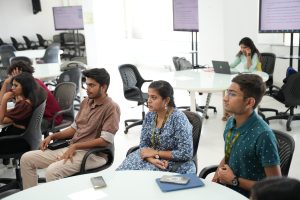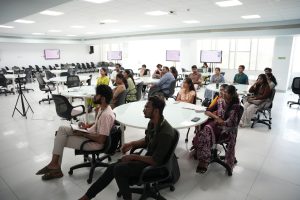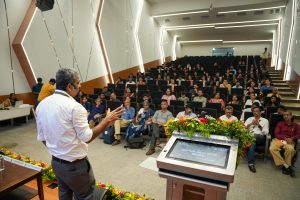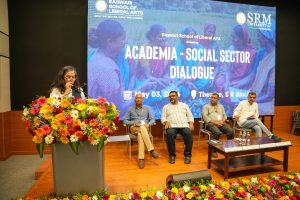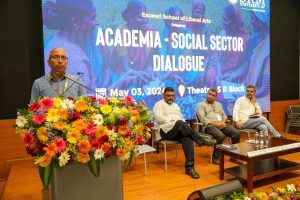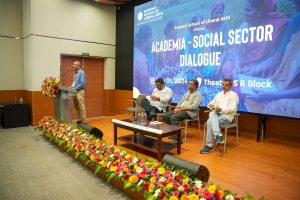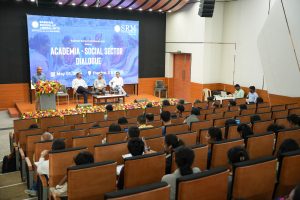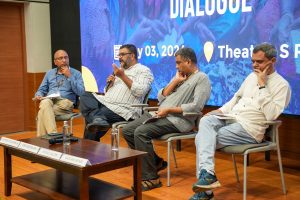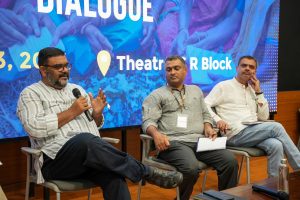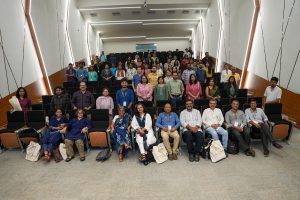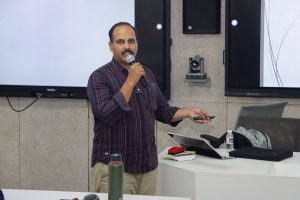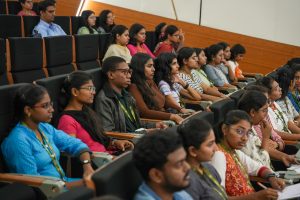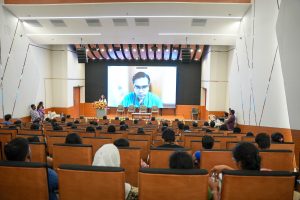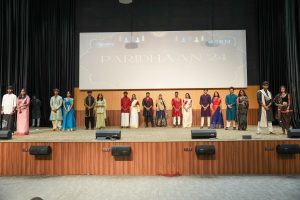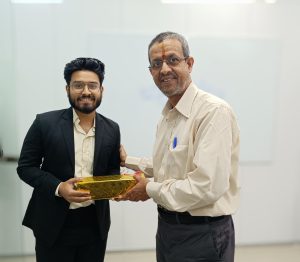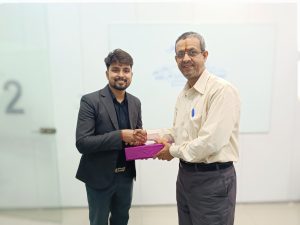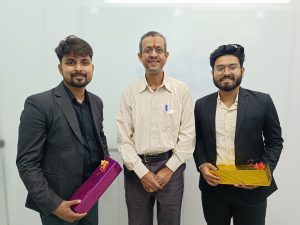A Review of Non-isolated BDC Topologies for Renewable Energy Systems
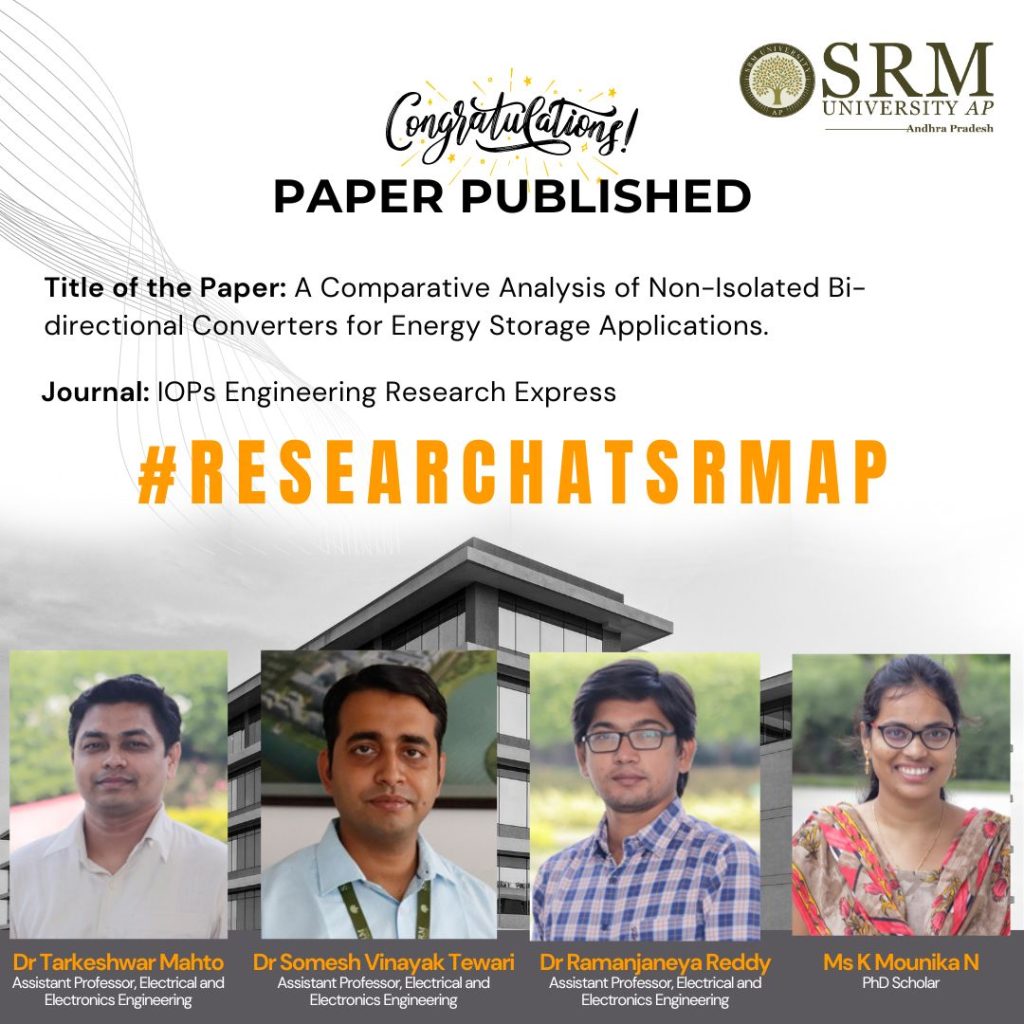
The Department of Electrical and Electronics Engineering is glad to announce that the paper titled “A Comparative Analysis of Non-Isolated Bi-directional Converters for Energy Storage Applications”, authored by Dr Tarkeshwar Mahto, Dr Somesh Vinayak Tewari, Dr Ramanjaneya Reddy, Assistant Professors and Ms K Mounika Nagabushanam, PhD Scholar has been published in the IOPs Engineering Research Express having an impact factor of 1.7. The paper explores various non-isolated bi-directional DC-DC converter topologies for renewable energy systems, providing insights into their performance and suitability for different applications.
Abstract
Bi-directional DC-DC converters (BDC) are required for power flow regulation between storage devices and DC buses in renewable energy-based distributed generation systems. The fundamental requirements of the BDC are simple structure, reduced switching components, a wide range of voltage gain, low voltage stress, high efficiency, and reduced size. There are different BDC topologies for various applications based on the requirements in the literature. Various BDCs are categorised according to their impedance networks. Isolated BDC converters are large due to high-frequency transformers and hence used for static energy storage applications whereas non-isolated BDC is lightweight and suitable for dynamic applications like electric vehicles. This paper reviews types of non-isolated BDC topologies. The performance of five non-isolated BDC converters under steady-state conditions is evaluated using theoretical analysis. On this basis, the suitability of BDC for different applications is discussed. Further advantages and limitations of converters are discussed by using comparative analysis. The optimisation of BDC for distributed generation systems from the perspectives of wide voltage gain, low electromagnetic interference, and low cost with higher efficiency is identified. Theoretical analysis of the converters is validated by simulating 200W converters in MATLAB Simulink.
The main challenges with energy storage systems are frequent failures due to frequent charging and discharging and the volume of the power converter. The team plans to:
- To design a converter with fewer components, low switching stresses, high power transfer capability, and higher efficiency to deliver continuous current to the energy storage system.
- To work on various control techniques to keep the DC link voltage of the propulsion system constant.
Link to the article
- Published in Departmental News, EEE NEWS, News, Research News
A Crash Course in Decoding Language with Ms Andalib Mahmud
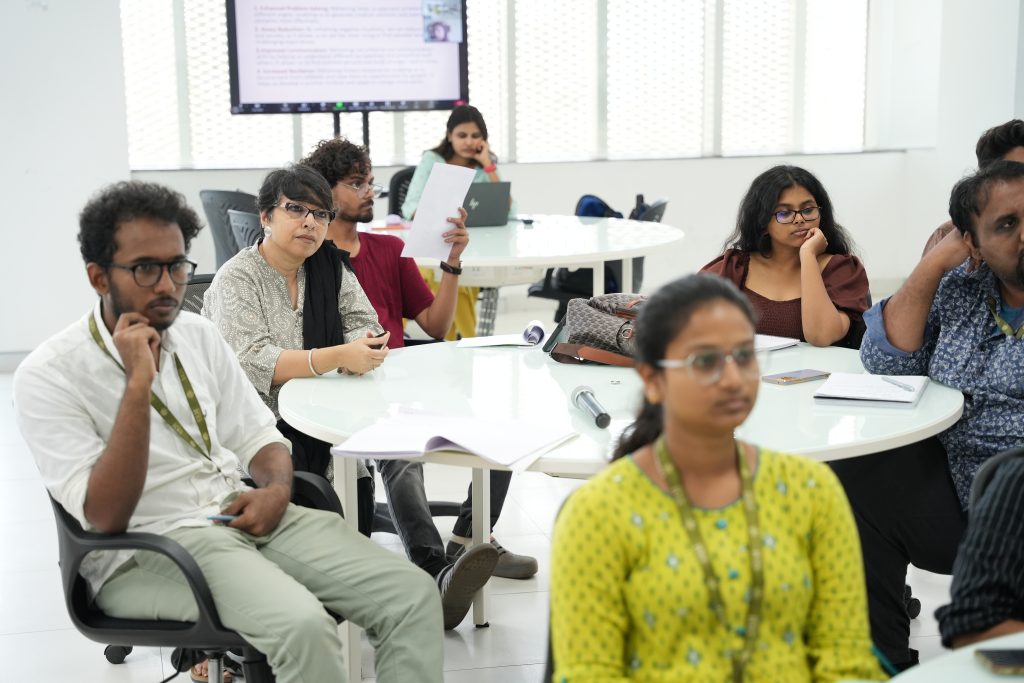
The Department of Literature and Languages invited Ms Andalib Mahmud, distinguished psychologist and master practitioner and trainer of Neuro-Linguistic Programming (NLP), to deliver an insightful guest lecture at SRM University-AP to students enrolled in the open elective course “Decoding Language,” taught by Dr Srabani Basu on May 02, 2024. Ms. Mahmud captivated the audience by elucidating the theory and practice of ‘reframing,’ a behavioural intervention technique utilised in NLP. She expounded on the intricacies of reframing, its techniques, objectives, and efficacy in modifying behaviour patterns. To enhance understanding, Ms Mahmud engaged the students in stimulating group activities, transforming the lecture into an experiential learning session.
The event not only provided students with theoretical knowledge but also offered practical insight into the application of NLP techniques. Ms Mahmud’s expertise and engaging teaching style left a lasting impression on the students, enriching their understanding of language decoding and behavioural interventions. The lecture was a resounding success, inspiring students to delve deeper into the field of NLP and its applications in language and communication.
- Published in Departmental News, English Current Happenings, News
Easwari School of Liberal Arts Facilitates Transformative Academia-Social Sector Dialogue
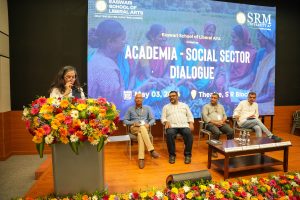 The Easwari School of Liberal Arts hosted the highly anticipated “Academia-Social Sector Dialogue” event, aiming to foster collaboration between academia and the social sector. The event brought together experts, social actors, scholars, practitioners, and students to engage in insightful discussions about the intersection of education and social sector development.
The Easwari School of Liberal Arts hosted the highly anticipated “Academia-Social Sector Dialogue” event, aiming to foster collaboration between academia and the social sector. The event brought together experts, social actors, scholars, practitioners, and students to engage in insightful discussions about the intersection of education and social sector development.
The event, convened by Prof. Vandana Swami, brought together a distinguished array of social sector leaders, Academicians from various states across India, deans, faculties, and students. It was a day of enlightening discussions and knowledge exchange, aiming to bridge the gap between academia and the social sector.
At the heart of this dialogue was a commitment to nurturing well-rounded, socially conscious leaders of tomorrow. The event provided a platform for students to engage directly with eminent figures from the social sector, fostering a deeper understanding of real-world challenges and opportunities.
The dialogue saw participation from leading social actors, including Liby Johnson (Gram Vikas, Odisha), Ronak Shah (Seva Mandir, Udaipur), Nishant Aggarwal (Donyi Polo Cultural and Charitable Trust, Arunachal Pradesh), Swapna Sarangi (Foundation for Ecological Security, Odisha), Gayatri Menon (Independent Researcher, Public Health Foundation of India, Bengaluru and Academic luminaries, such as Suraj Jacob (Azim Premji University, Bengaluru) and Manu Mathai (World Resources Institute, Bengaluru) Yamini Aiyar, Former President, Center for Policy Research, New Delhi, added depth to the dialogue, offering nuanced perspectives on the intersection of academia and the social sector.
Prof. Vishnupad, Dean of Easwari School of Liberal Arts, expressed his satisfaction with the event’s outcomes, stating, “We are delighted to have facilitated this enriching exchange between academia and the social sector. The discussions were not only insightful but also generative, paving the way for potential future collaborations between students and social sector organisations that can bring about positive change in the society.”
A highlight of the event was the keynote speech by Amitabh Behar, Global Executive Director of OXFAM. Behar’s insights sparked discussions among attendees, leading to reflection and action-oriented dialogue on caste, gender, and economic inequality. This prompted introspection and dialogue on the responsibilities of civil society in addressing these urgent issues.
The event featured thought-provoking panel discussions on two key themes: “Social Sector and the Indian State: Challenges and Opportunities” and “Role of Social Sector in Liberal Arts Education.” Panellists deliberated on the complexities and possibilities within the social sector, exploring ways to address challenges and leverage opportunities for societal progress. The dialogue was not only engaging but also fruitful, laying the groundwork for potential collaborative efforts in the future.
Furthermore, discussions on the Easwari School of Liberal Arts Summer Immersion Programme underscored the institution’s commitment to experiential learning and social impact.
Prof. Vandana Swami, Professor, Easwari School of Liberal Arts remarked, “Academia-Social Sector Dialogue epitomises SRM University-AP’s ethos of excellence, innovation, and social responsibility. It serves as a testament to the university’s unwavering dedication to shaping future leaders who are not only academically proficient but also socially conscious and empathetic global citizens”.
- Published in Departmental News, History Current Happenings, Liberal Arts News, Media Studies, News
Paaridhan: Weaving a Tapestry of Culture and Ethnicity!
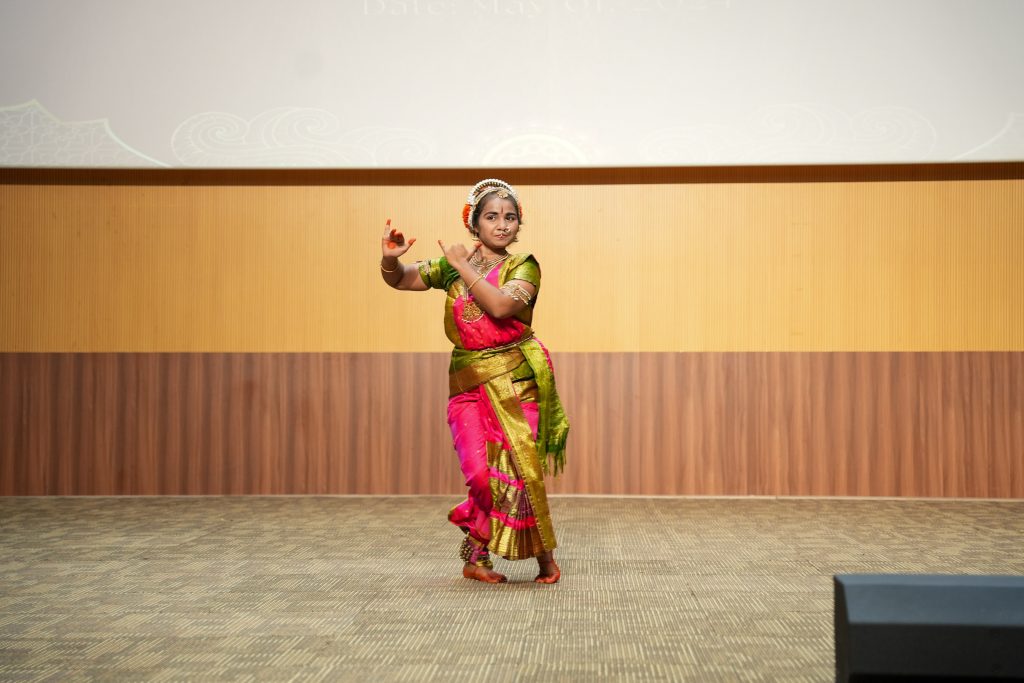
“India is a place where colour is doubly bright. Pinks that scald your eyes, blues you could drown in.” – Kiran Millwood Hargrave
This was a reality at SRM University-AP on May 01, 2024, as the university transformed into a vibrant hub of cultural pride and unity as it celebrated “Paaridhaan”. Students dazzled the campus with an array of performances, fashion walks, and activities, each showcasing the rich tapestry of our diverse backgrounds. The campus was engulfed in a colourful hue as students attended the celebration adorned in traditional ethnic wear.
This remarkable event, organised under the aegis of the Directorate of Student Affairs, included breathtaking dance acts, soulful musical performances, and a fashion show that captivated all in attendance. This celebration brought the university together and left lasting memories of a community united in its diversity.
- Published in Departmental News, News, student affairs news
Groundbreaking Research on Advanced Technology Nodes
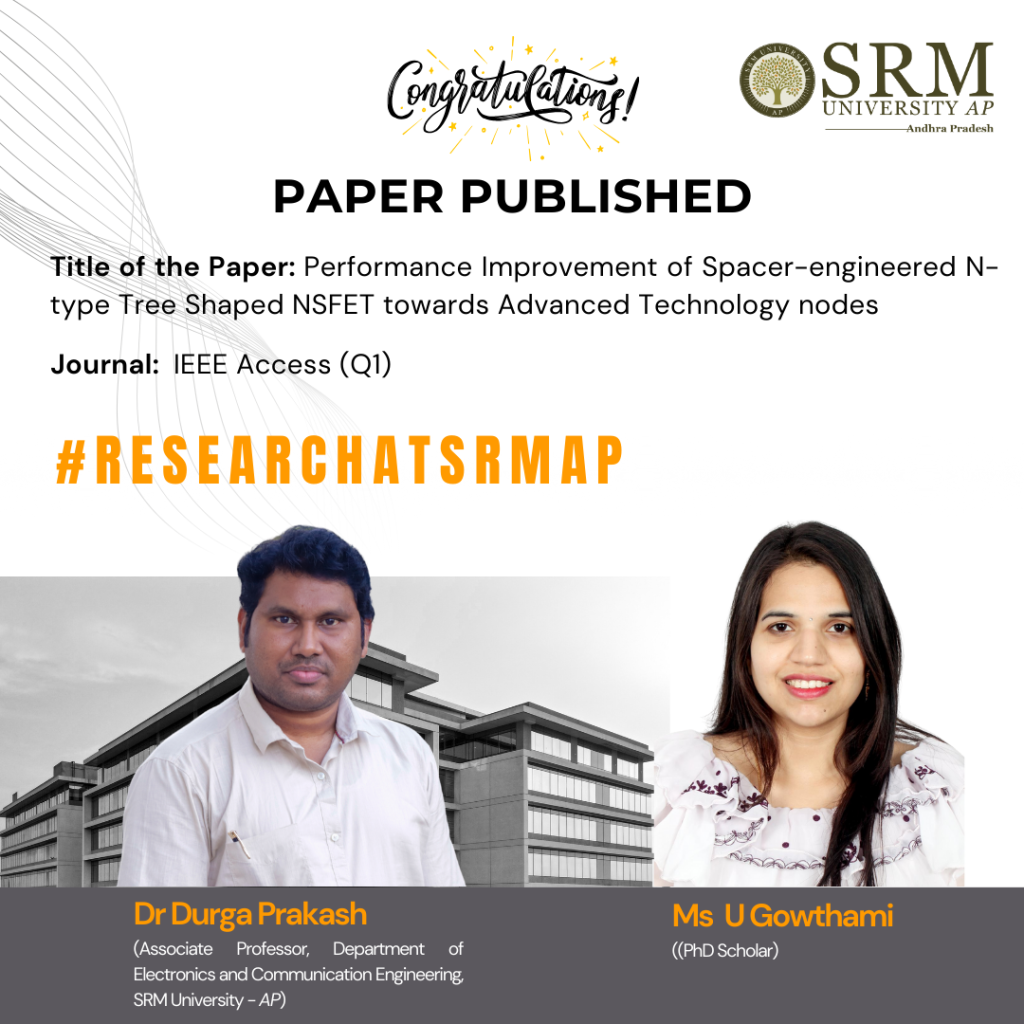
Dr M Durga Prakash, Assistant Professor in the Department of Electronics and Communication Engineering, and his PhD scholar, Ms U Gowthami, have published a research paper titled “Performance Improvement of Spacer-engineered N-type Tree Shaped NSFET towards Advanced Technology nodes” in the Q1 journal, IEEE Access. The paper has an impact factor of 3.9 and will pave the way for significant advancements in the field.
Here’s an abstract of their research paper
Abstract:
Scaling gate lengths deep is most reliable with tree-shaped Nanosheet FETS (NSFET). This paper uses TCAD simulations to study the 12nm gate length (LG) n-type Tree-shaped NSFET with a stack of high-k dielectric (HfO2) and (SiO2) spacers. The Tree-shaped NFET device features high on-current (ION) and low off-current (IOFF) with T(NS) = 5 nm, W(NS) = 25 nm, WIB=5nm, and HIB = 25 nm. Comparison of single- and dual-k spacer 3D devices and DC properties are shown. Because fringing fields with spacer dielectric prolong the effective gate length, the dual-k device has the highest ION / IOFF ratio, 109, compared to 107. This research also examines where work function, inter bridge height, breadth, gate lengths, temperature, and analog/RF and DC metrics affect the device. The suggested device has good electrical properties at 12 nm LG, with DIBL = 23 mV/V, SS = 62 mV/dec, and switching ratio (ION / IOFF) = 109. The device’s performance proves Moore’s law applies to lower technological nodes, enabling scalability.
The link to the article- https://ieeexplore.ieee.org/document/10499264 DOI: 10.1109/ACCESS.2024.3388504

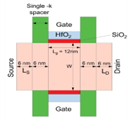
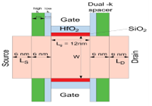
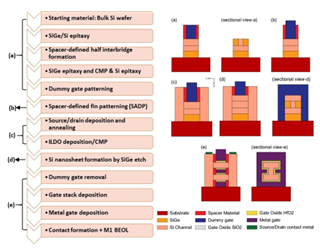
- Published in Departmental News, ECE NEWS, News, Research News
Enhancing International Placements with Simandhar Education
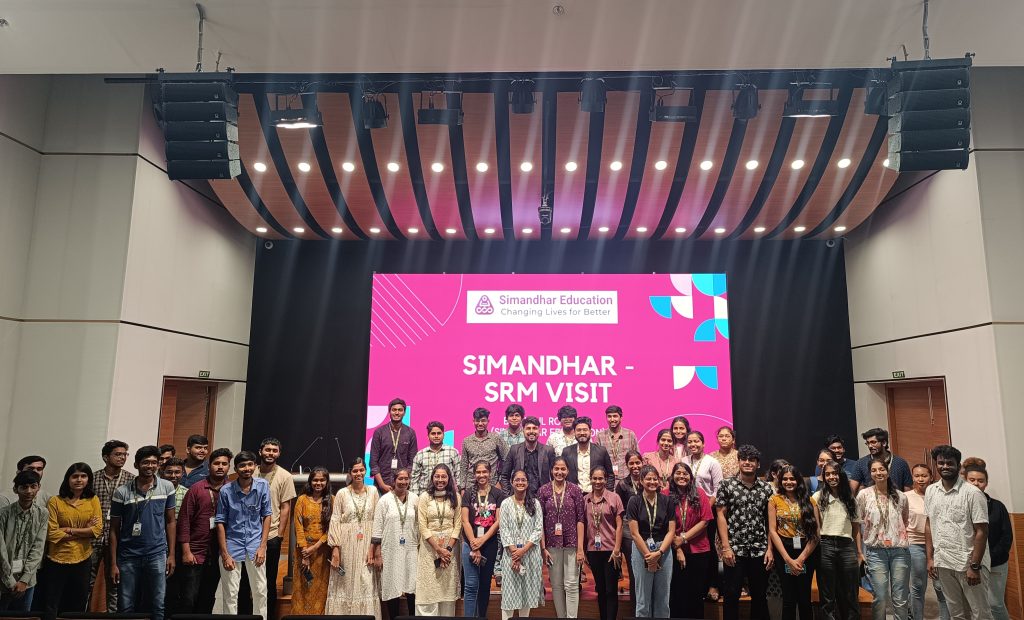
The Paari School of Business has networked with various industry, academia, and social sector partners to ensure that the management and commerce students are placed at national and international firms with lucrative packages. Recently, the school had a visit from Simandhar Education, one of India’s leading institutes providing certified US finance courses in India on April 29, 2024. Mr Rahul Roy and Mr Anupam Biswas, SME from Simandhar Education, shared a comprehensive insight into a potential collaboration between Paari School of Business and Simandhar Education.
Simandhar Education is one of the renowned Indian institutes that provide US CPA/CMA/EA courses. They have 100+ Corporate Tie-ups for training and placement, including with Big 4s and Top 10 global accounting firms. They are the best channel partner of Becker in India, an approved channel partner of AICPA and a Silver approved partner of IMA.
Mr Roy explained the extensive services offered by Simandhar Education in providing quality training and placements for the students of Paari. These include live interactive classes, recorded classes, unlimited practice tests, mock tests, revision lectures, etc. This partnership could be a silver lining for the students of Paari as it enhances their chances of placement in multinational firms in the US.
- Published in Departmental News, News, Paari Current Happenings
Critical Analysis of the Influence of Hydroclimatic Variability and Anthropocene on the Groundwater of the Sundarbans
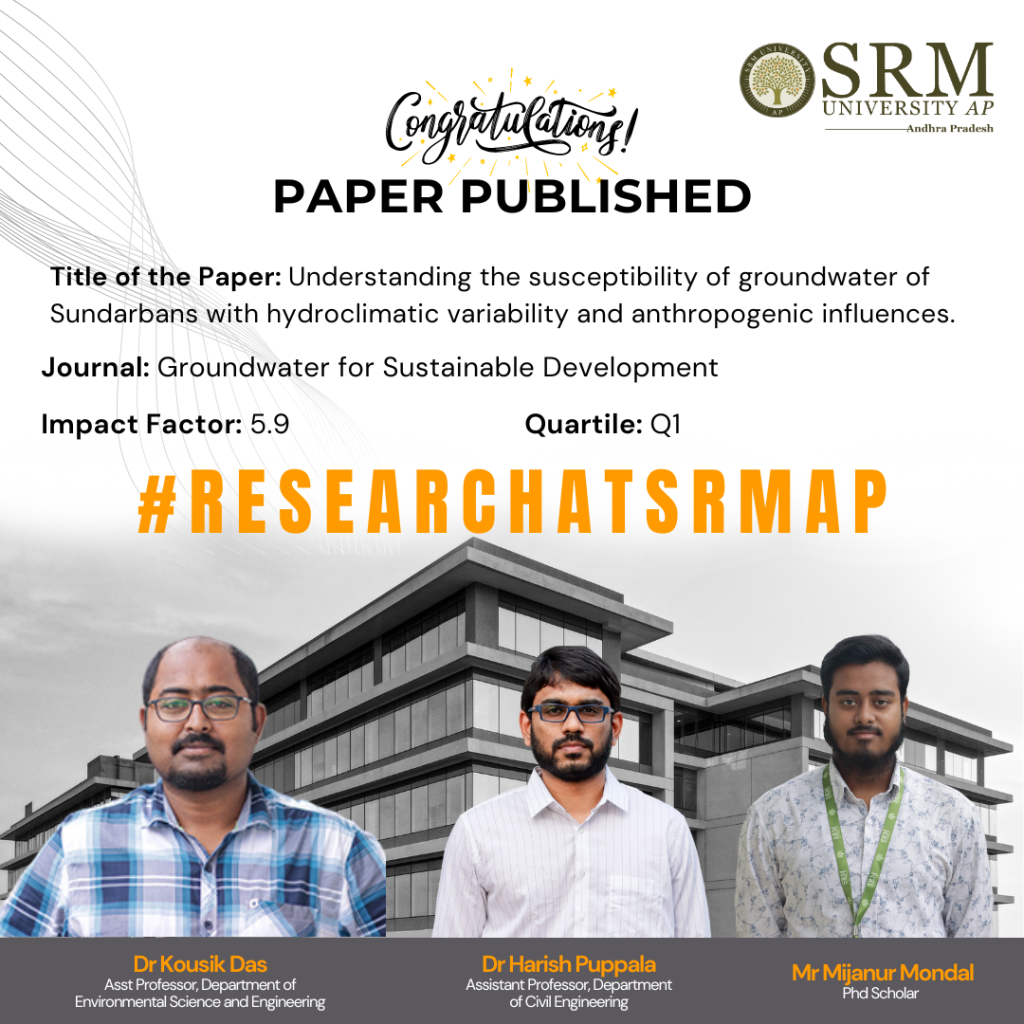
The water crisis in India, especially in the coastal regions, has worsened alarmingly, coercing environmentalists and researchers to critically study the reason behind this phenomenon. The Sundarbans region faces a scarcity of drinking water in terms of quality and quantity due to various reasons. Dr Kousik Das, Asst. Professor, Department of Environmental Science and Engineering, Dr Harish Puppala, Asst Professor, Department of Civil Engineering and Mr Mijanur Mondal, Research Scholar from the Department of Environmental Science and Engineering has conducted a groundbreaking study on the increased salinization of water due to human activities. The research trio has published a paper titled “Understanding the susceptibility of groundwater of Sundarbans with hydroclimatic variability and anthropogenic influences” in the prestigious Q1 journal Groundwater for Sustainable Development, which has an impact factor of 5.9, critically analysing the numerous factors that affect the quality of drinking water in the Sundarbans region.
Abstract
Coastal aquifers worldwide are experiencing increased salinisation due to climate change and human activities. Sundarbans, in India, is one such area where this phenomenon is noticed at an unprecedented rate, making drinking water unpotable for consumption. Existing studies lack a comprehensive analysis of the underlying causes. This study conducts a systematic literature review to identify drivers of groundwater salinisation, examining climate change parameters such as rainfall patterns, sea level rise, El Niño-Southern Oscillation, and tropical cyclones. Significant groundwater level declines from 1996 to 2017 are primarily attributed to variations in the Indian Ocean Dipole and El Niño Southern Oscillation, affecting rainfall and recharge rates. During tropical cyclones, groundwater levels rise rapidly, and quality is sensitive to El Niño Southern Oscillation. Rising sea levels, changing rainfall, and increasing population density worsen salinisation. Shallow aquifers have high salinity, whereas deep aquifers exceed permissible limits. This underscores the urgent need to address drinking water scarcity and potential migration resulting from complex interactions between climate, population, and groundwater management.
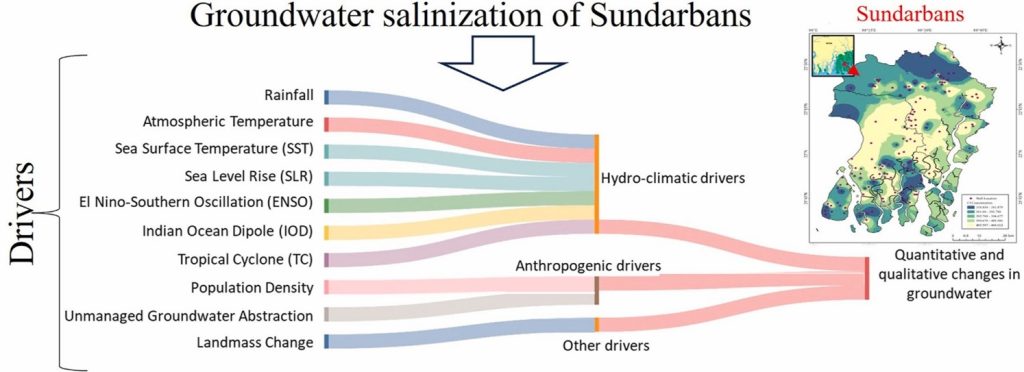
Social Implications of the Research
- Water Quality Monitoring: Implementing regular monitoring of salinity levels in groundwater to ensure compliance with safety standards.
- Community Awareness Programmes: Conducting educational campaigns to inform local communities about the risks of high salinity levels in drinking water and promoting the judicious use of water sources so that unscientific abstraction can be reduced.
- Policy Development: Formulating policies at the local and national levels to regulate salinity levels in drinking water and ensure public health protection.
- Infrastructure Improvement: Investing in water treatment facilities or technologies to remove high salt levels from groundwater sources. Alternative sources and rainwater harvesting can be taken into consideration.
Collaborations – IIT Kharagpur, India
The research team plans to work on Groundwater vulnerability modelling using AI/ML in Sundarbans, India next. The team has begun collecting primary data using questionnaire surveys and interviews to throw light on socio-economic conditions and to understand the core reasons for the water crisis and health and psychological issues due to water unavailability, especially during extreme events like cyclones.
Link to the article
- Published in CIVIL NEWS, Departmental News, ENVS News, News, Research News
Uncovering the Factors Influencing Income Inequality in Rural Indian Households: A Comprehensive Study
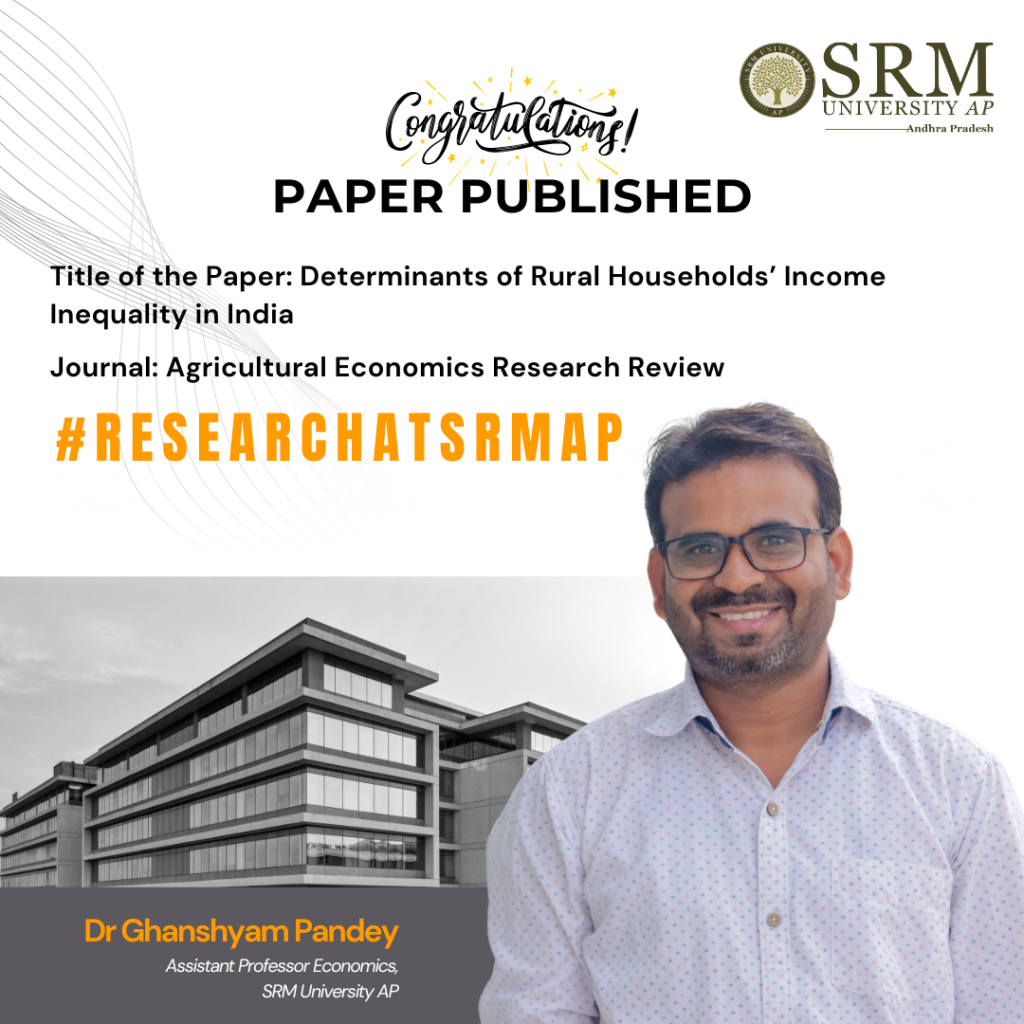
The Department of Economics takes immense pride in announcing the publication of the research paper, “Determinants of Rural Households’ Income Inequality in India” authored by Dr Ghanshyam Pandey, Assistant Professor. The paper has been published in the Journal of Agricultural Economics Research Review (ABDC-C), and has an impact factor of 0.19. Dr Pandey’s paper examines the factors that determine income inequality among rural farm households in India and discusses the implications of the findings for policymakers, practitioners, and researchers. The study highlights how addressing the identified factors could potentially reduce income inequality among rural farm households and improve the overall well-being of the rural population.
Abstract
This study has identified the drivers of income inequality in rural India using IHDS 2011–12 national-level survey. The inequality decomposition methodology developed by Fields (2003) based on a two-way regression methodology has been used. The study has modified the previous regression based inequality decomposition technique by accounting for diverse income sources and regimes as well as by effectively correcting for selectivity in the various income regimes. The CLAD model has been used to distinguish the determinants of income inequality in rural India. The study has indicated that income inequality in farm households can be attributed to the level of education, family size, caste/social group composition, and composition in land ownership and that family size and land ownership are instrumental primarily due to off-farm labour income. The study has shown that education is a significant factor in income inequality due to its impact on off-farm work income. The study has suggested that a continued increase in variability in land distribution may exacerbate income inequality in households in rural India.
Link to the Article
Pandey G and Devi B (2023). Determinants of rural households’ income inequality in India. (2024). Agricultural Economics Research Review, 36(2), 213-225. https://epubs.icar.org.in/index.php/AERR/article/view/150669

- Published in Departmental News, Economics Current Happenings, Economics News, News, Research News
Dr Chimoy Das’ Research Makes Latest Breakthrough in Material Science
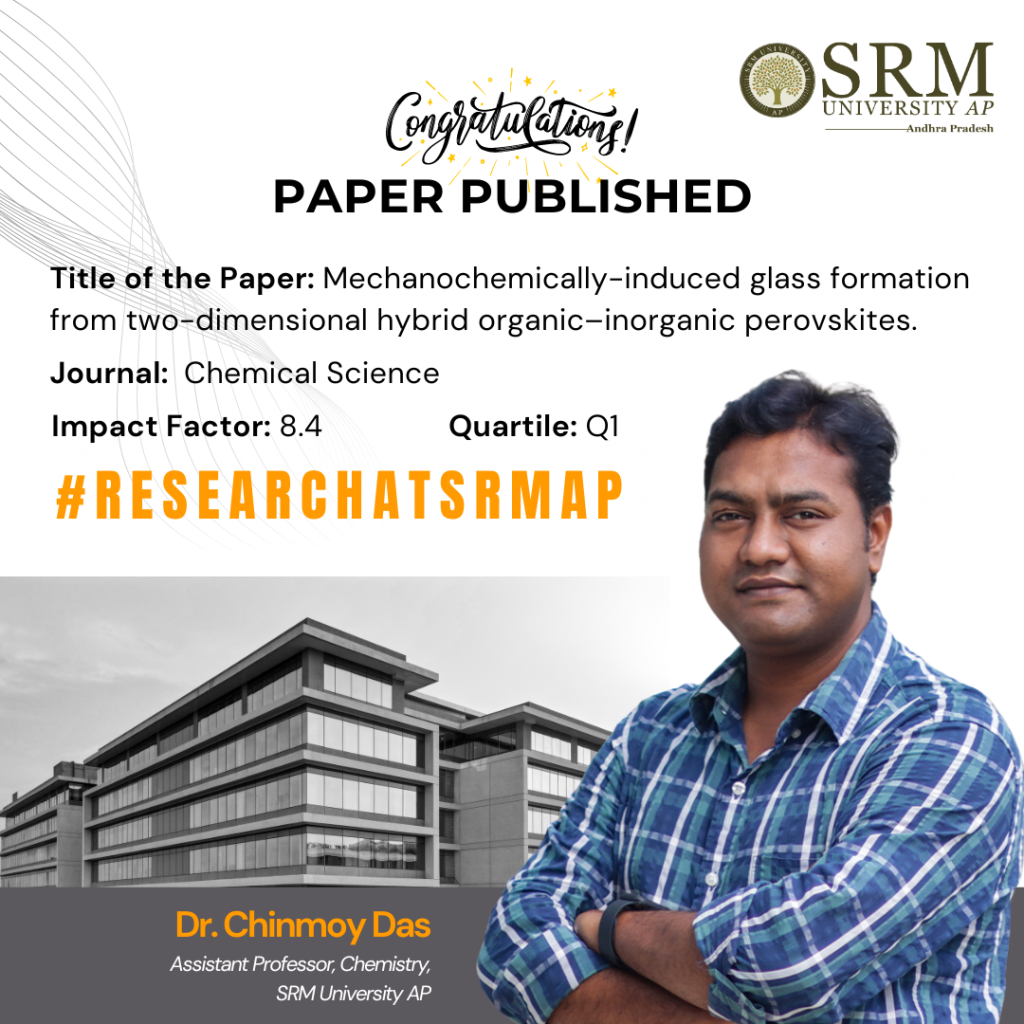
The Department of Chemistry is thrilled to announce the paper “Mechanochemically-induced glass formation from two-dimensional hybrid organic-inorganic perovskites”, published by Dr Chinmoy Das, Assistant Professor in the reputed Q1 Journal Chemical Science with an 8.4 Impact Factor. This groundbreaking research introduces a novel method for transforming crystalline phases into glasses through mechanochemical processes. This environmentally friendly and efficient method opens new doors for manufacturing glasses, revolutionising traditional processes. This remarkable research celebrates this extraordinary blend of chemistry, physics, and innovation!
Abstract
The first mechanochemically-induced hybrid organic-inorganic perovskites (HOIPs) crystal-to-glass transformation was reported as a quick, environmentally friendly, and productive method of making glasses. Within ten minutes of mechanical ball milling, the crystalline phase transformed into the amorphous phase, demonstrating glass transition behaviour as shown by thermal analysis methods. The microstructural evolution of amorphization was studied using time-resolved in situ ball-milling with synchrotron powder diffraction. The results indicated that energy may accumulate as crystal defects because the crystallite size reaches a comminution limit before the amorphization process is finished. The limited short-range order of amorphous HOIPs was discovered through total scattering experiments, and photoluminescence (PL) and ultraviolet-visible (UV-vis) spectroscopy were used to examine their optical characteristics.
Explanation of the research in layperson’s terms
Crystalline inorganic perovskites (general chemical formula is ABX3, where A and B are cations, and X is anion) are generally known for their unique optoelectronic applications, such as solar cells, photodetectors, and LEDs (light emitting diodes). In this research, Dr Das revealed hybrid materials comprised of organic linkers and inorganic nodes, which constitute hybrid organic-inorganic perovskites (HOIPs). The research demonstrated a rapid and environment-friendly (mechanochemically ball milling assisted) synthetic approach to transform the crystalline phase to its non-crystalline/amorphous phase. Interestingly, the amorphous phase of HOIPs showed temperature-dependent glass transition temperature (Tg) at very low temperatures, ~50 C. The structure of the HOIP glasses has been characterised through total-X-ray diffraction studies and pair-distribution functions. The crystalline and glassy HOIPs showed optical properties, which were studied by photoluminescence (PL) and ultraviolet-visible (UV-vis) spectroscopy.
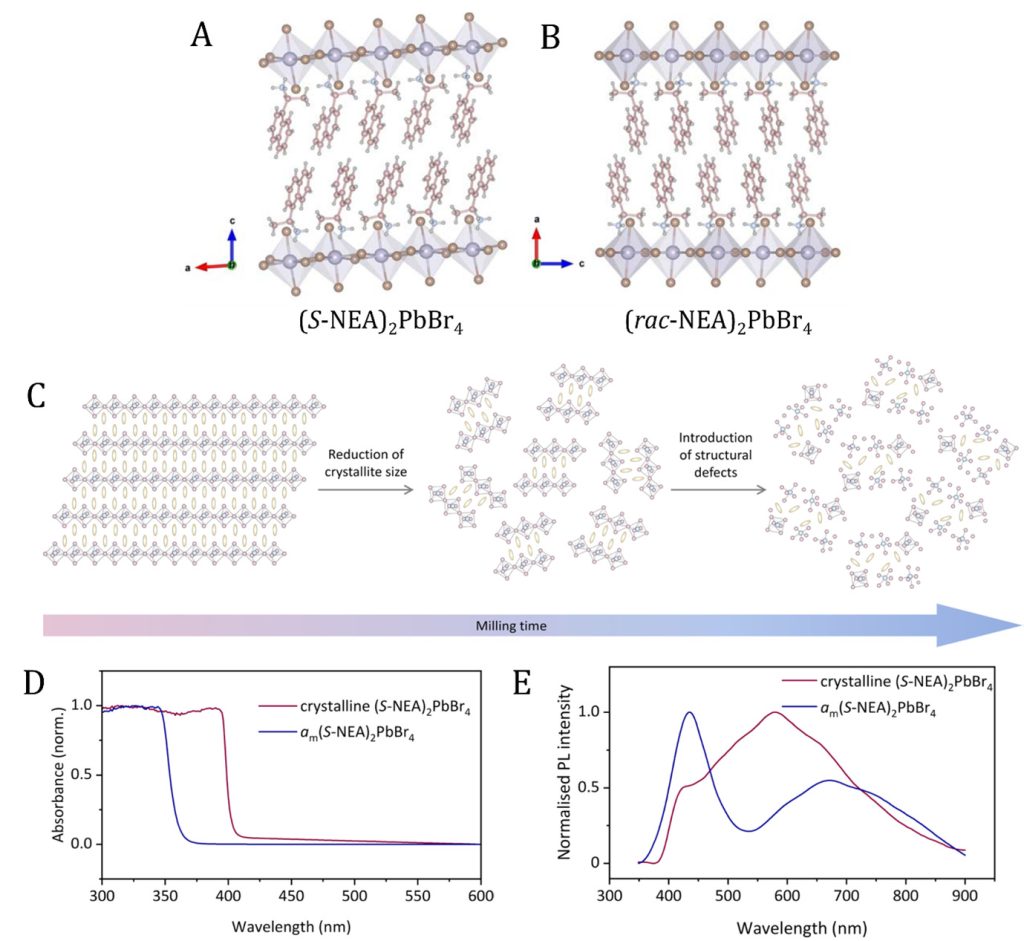
Figure 1. Single crystal structures of (A) (S-NEA)2PbBr4 and (B) (rac-NEA)2PbBr4. Pb, Br, C, N and H atoms are represented by purple, brown, pink, blue, and grey colours, respectively. (C) Schematic illustration of the microstructural evolution on 2D HOIPs upon ball-milling. (D) UV-Vis and (E) photoluminescent properties of crystalline (S-NEA)2PbBr4 (purple) and glassy (S-NEA)2PbBr4 (blue) HOIPs.
Practical implementation/ social implications of your research
Through the mechanochemical approach, we prepared novel hybrid organic-inorganic perovskite (HOIP) glasses within ten minutes, showing the greater feasibility of processing the glass material for industrial implication. On the other hand, we also demonstrated that the HOIP glasses showed photoluminescence properties, which would enable us to fabricate the device for solar cells, photodetectors, LEDs and many more.
Collaborations
- Department of Materials Science and Metallurgy, University of Cambridge, United Kingdom.
The Department of Chemistry has established a research group at SRM University-AP, and the group has started to explore an emergent research area of crystal-glass composite materials towards the applications of atmospheric water harvesting, solid-state electrolytes, photovoltaics, and conversion of gaseous Carbon-dioxide molecules to industrially relevant liquids, such as methanol or ethanol.
Any interested candidate can reach out to Dr Chinmoy for exciting projects.
- Published in Chemistry-news, Departmental News, News, Research News
GPEMC Sanctions Consultancy Project Worth 48.9 Lakhs
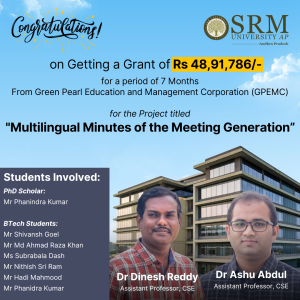 Green Pearl Education and Management Corporation (GPEMC) has recently sanctioned a significant consultancy project to SRM University-AP, titled “Multilingual Minutes of the Meeting Generation.” This project aims to develop innovative solutions for generating multilingual minutes of meetings, ensuring effective communication, and understanding across language barriers.
Green Pearl Education and Management Corporation (GPEMC) has recently sanctioned a significant consultancy project to SRM University-AP, titled “Multilingual Minutes of the Meeting Generation.” This project aims to develop innovative solutions for generating multilingual minutes of meetings, ensuring effective communication, and understanding across language barriers.
The Consultancy Project has been assigned to Dr. Ashu Abdul and Dr. Dinesh Reddy Vemula, Assistant Professors for a period of 7 months from the Department of Computer Science and Engineering (CSE). Their expertise in language processing and computational linguistics will play a crucial role in the successful execution of this project.
Joining them in this endeavour is Mr Phanindra Kumar, a dedicated PhD scholar, and a team of talented B.Tech. students, including Mr Shivansh Goel, Mr Md Ahmad Raza Khan, Ms Subrabala Dash, Mr Nithish Sri Ram, Mr Hadi Mahmood, and Mr Phanidra Kumar. Their combined skills and enthusiasm will contribute to the development of innovative solutions for multilingual meeting documentation.
The Consultancy Project has been sanctioned with an outlay of Rs 48,91,786/- as consultancy charges for a period of 7 months. This funding will support the research and development efforts required to deliver efficient and accurate multilingual minutes of meetings.
The objective of this project is to create an automated system that can generate minutes of meetings in multiple languages, ensuring accurate and comprehensive documentation. By overcoming language barriers, this project aims to facilitate effective communication and collaboration in diverse organizational settings.
The collaboration between SRM University-AP and GPEMC highlights the commitment of both institutions to research and innovation. This consultancy project presents an exciting opportunity for the faculty members and students to contribute to real-world problem-solving and make a substantial impact in the field of language processing.
Abstract
The project ‘Multilingual Minutes of the Meeting Generation’ aims to develop an innovative application that automates the creation of meeting minutes, action plans, and summaries in multiple languages. Leveraging advanced research in natural language processing and speech recognition technologies, our application seeks to streamline the tedious and time-consuming task of minute-taking. It will do so by accurately identifying, associating, and documenting statements with their respective speakers during meetings using speech diarization techniques.
The primary objective is to enhance the efficiency and accuracy of meeting minutes while supporting diverse linguistic needs and eliminating human error, thereby catering to global business environments. The system will improve the meeting outcomes for all participants by identifying the action items from the meeting. This project intends to deliver an effective solution for enterprises by combining the latest technological advances with a user-centric design.
Explanation of the Research in Layperson’s Terms
The project called “Multilingual Minutes of the Meeting Generation” is about creating a new tool that automatically writes down what happens in meetings—like the minutes, action items, and summaries—and can do this in several languages. This tool uses the latest technology in understanding and processing human speech, which helps make the task of recording meeting details much faster and easier.
The special feature of this tool is its ability to figure out who is speaking and accurately attach their words to them in the meeting notes. This makes sure the meeting records are both correct and detailed. The main goal here is to make creating and keeping track of meeting records more efficient and accurate, help people who speak different languages, and reduce mistakes that can happen when humans take down notes.
This system is especially useful in today’s global business setting, where people from different parts of the world need to work together smoothly. It aims to lessen the work involved in manually writing meeting notes and make the results easier for everyone to use and understand. Overall, the project promises to blend cutting-edge technology with designs that focus on the needs of the users to provide a practical tool for businesses.
Practical Implementation or the Social Implications Associated with the Research
The practical implementation of this project is particularly beneficial for enterprises, institutions, and professional settings where meetings are frequent. By automating minute-taking, it allows participants to focus more on discussion and decision-making, rather than note-taking. This leads to more productive meetings and ensures that important details are not lost or misinterpreted. Ultimately, this technology enhances communication and documentation accuracy across diverse linguistic and cultural landscapes in business and professional environments.
Collaborations
This project is being developed in collaboration with the members of the Next Tech Lab AP at SRM University-AP
Future Research Plans
The future plans for this project involve integrating the application with widely used platforms such as Zoom, Google Meet, and others that support video/audio conferencing. This integration aims to seamlessly incorporate the automated minute-taking functionality into these platforms, enhancing accessibility and usability for users across various companies and institutions. By expanding compatibility with popular conferencing tools, the project seeks to further streamline meeting documentation processes and cater to a broader user base in diverse professional settings.
- Published in Computer Science News, Departmental News, News, Research News


